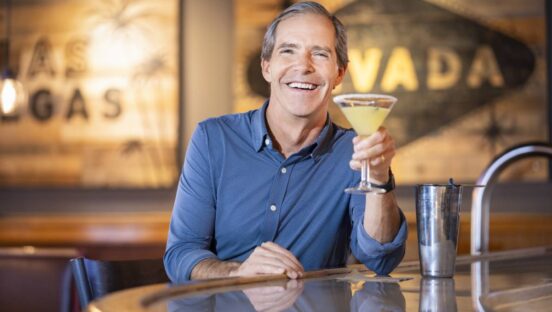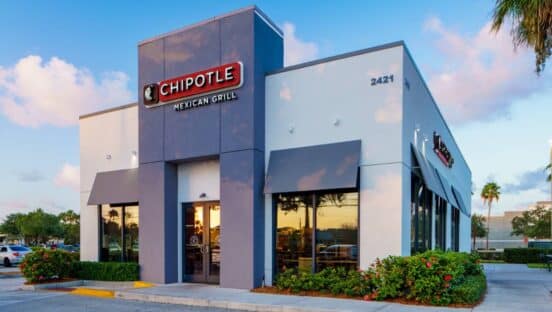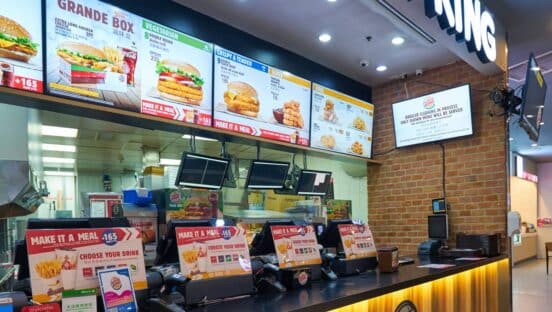Rising consumer demand for off-premises dining has forced nearly all quick-service and fast-casual brands to at least consider a foray into delivery. Nowadays, third-party services are no longer fringe experiments, but rather a mainstream piece of the restaurant business. Their popularity has led many brands to jump on board—often with multiple third-party platforms—lured by promises of incremental sales growth and expanded customer bases. Other restaurant brands are working on exclusive deals with such services to better control the delivery experience and keep costs down. And some brands have started to turn away from third parties in favor of building in-house delivery systems of their own.
Whatever their approach, operators say they can’t afford to ignore delivery.
“It really comes down to the consumer wanting the service,” says Jersey Mike’s president Hoyt Jones. “It’s almost a necessity anymore that in the restaurant business, you’re going to have to adopt the service one way or another.”
Jersey Mike’s is among the hundreds of restaurant brands partnering with outside delivery providers.
“It’s hard to manage an in-house business, a carry-out business, and then a delivery business,” he says. “We’re going to let the Ubers, the Postmates, and the DoorDashes take care of the driver pool and make sure they’re happy. We’ll make great subs and provide them as quickly as we can.”
For the most part, the company is pleased with the various third-party services it’s using. Jersey Mike’s is mostly signing on to the larger outfits, working to leverage its inventory of 1,500 stores with the big players in the space.
While some of the changes Jersey Mike’s made to accommodate delivery were minor—for example, it moved away from a foil wrap two years ago to prevent hot subs from growing soggy, and it’s tinkering with tamper-proof seals on its bags—others were more significant. The company is developing a new store prototype, one that could have a dedicated pickup space for carryout customers and third-party drivers while also reshaping one of the lines to better service off-premises orders.

It’s easy to see the appeal of third-party delivery: Restaurants simply sign up and can quickly offer delivery to convenience-minded customers without ever hiring drivers or procuring vehicles. But even as third-party has transformed into a multi-billion-dollar business, many restaurant operators remain frustrated with the high fees charged by those services and struggle to make sense of the tight margins.
Little Greek Fresh Grill has hiked its prices on delivery orders to help offset the high fees charged by third-party partners. Two stores have tested in-house delivery services, but most don’t have the volume to support such infrastructure, says company president Nick Vojnovic. So the corporate team is recommending franchisees sign up with third-party delivery providers—albeit reluctantly.
“It’s kind of a margin killer,” Vojnovic says. “They’re keeping 32 percent of the money. In the restaurant business, your margins are maybe 15 or 20 percent, so that’s kind of killing it.”
Similar dynamics have driven Wayback Burgers to build its own delivery solution. Senior vice president Pat Conlin wouldn’t reveal many details about Wayback’s upcoming program, which the company planned to unveil to franchisees this fall, but he expects the in-house solution will wean the burger chain off third-party vendors.
“We’ve been looking at all kinds of alternatives to the third-party guys. I’ve been working for the last four to five months on our own alternative to a delivery solution that we think is going to be pretty significant,” Conlin says. “We think it will be a game-changer for the delivery business.”
The 150-unit chain is motivated by better controlling the delivery experience and avoiding the steep fees charged by third-party services, which generally range between 20 and 30 percent, Conlin says.
One way to realize savings is by working with only those systems that integrate into a restaurant’s existing POS system, says Justin McCoy, vice president of marketing for Wisconsin-based Cousins Subs. Third-party delivery providers charge a premium for recruiting customers through their sites and apps. But Cousins Subs worked to integrate third-party delivery through the company’s existing website.

Aside from securing more favorable pricing, that model avoids another major drawback of third-party delivery: lack of data. Restaurants don’t own any of the customer data if it’s managed through the third-party platform. That can complicate marketing and messaging, and excludes delivery orders from customer loyalty programs.
“You have to make a determination if you want to own your data or if you’re not going to own your data,” McCoy says. “You have to look long and hard at the financials in terms of what you’re doing.”
McCoy suggests operators who are exploring delivery first do a deep dive on their own POS systems. Finding third-party providers that integrate into the existing restaurant framework also keeps stores from being overtaken by multiple vendor platforms—one for Grubhub, one for Uber Eats, one for DoorDash, etc.
“There are pictures out there of operators that have registers and five or six tablets from third-party providers,” McCoy says. “I think it starts to pull away from who you are as a brand.”
Cousins Subs has integrated delivery into the 100-unit system in several distinct ways. Its primary play is through partnering with a recommended third-party provider that’s integrated into its systems. Meanwhile, a downtown Milwaukee store has introduced a bicycle delivery service, while another store is testing an in-house delivery service complete with Cousins-branded cars.
Of course, in-house delivery creates new complications.
“One of the things you have the biggest challenges with in today’s labor market is not only finding qualified staff, but they also need a clean driving record and they need a reliable vehicle,” McCoy says. “Those things can be really challenging. … We do very well at that location, but we have not fully expanded that to other locations yet. It’s something we’ve been contemplating how we want to do it.”
While it’s not a franchisor recommendation, Cousins knows franchisees may sign up with third-party delivery providers independently, so executives have met with all of the major players to understand them just in case franchisees decide to partner with them, McCoy says.
He expects that most brands will eventually transition to solely third-party delivery or wholly in-house delivery programs. But for now, Cousins, like many operators, is working to figure out how best to play in the ever-competitive delivery business.
“It’s very fluid,” he says. “It’s continuing to change and evolve, and it’s something you need to stay on top of.”
In its third-quarter town-hall meetings with Dickey’s Barbecue Pit operators, delivery dominated the conversation, says CEO Laura Rea Dickey. The chain jumped aggressively into third-party services about two years ago, seeking the best-in-class provider in each market. Sales shot up, and now about a fifth of the company’s sales come from third-party delivery.
But the nation’s largest barbecue chain doesn’t love the fees or lack of control that come with delivery providers. That’s why it began testing in-house delivery in 2017, and it plans to roll out direct delivery to all stores by the fall.
Dickey expects the brand to stick with a hybrid model over the short-term. But she’d ideally like to capitalize on the merits of both: leveraging the large audience of the third-party providers while also pointing new customers to the more profitable in-house delivery program.
“I would absolutely love to see every owner-operator be able to maintain control of their guests directly,” she says. “I would love to continue to use third-party to extend our reach, but be able to convert the majority of them to our app, our services.”

She urges those who are hesitant to jump into delivery to redefine how they think about it. For Dickey’s, it’s essentially an evolution of its robust carryout and catering business. “This is a new way to think about catering,” Dickey says. “It’s small catering orders.”
But not much about delivery is simple.
After 58 years, Domino’s is still learning ways to perfect its delivery service, says Tim McIntyre, the company’s executive vice president of communications and investor relations. He says the success of pizza delivery has set an expectation of reliability and speed for other restaurants that is tough to match.
With third-party delivery, restaurants aren’t totally responsible for clearing that high bar. And there’s no need for a huge lineup of drivers and cars. But the proliferation of third parties has made the technology a commoditized product. Conversely, Domino’s owns and designs its own technology and can leverage that as a differentiator. “In order for it to be a competitive advantage, you have to own it,” McIntyre says. “If you use a third party, so can everybody else.”
While the industry clamors for the growing pot of convenience-minded delivery customers, McIntyre says it’s important to remember the base of customers still wanting to come in and pick up food for off-premises occasions. Delivery customers will pay a premium for convenience, but carryout customers are more value-driven, he says. They often want to witness their food being prepared and see for themselves how clean a store looks. During football season, Domino’s plans to run separate television ads targeting the carryout and delivery fan bases.
“They’re different customers,” McIntyre says. “People are either exclusively delivery or exclusively carryout.”
At McAlister’s Deli, more than 200 of the brand’s 430 units partner with outside delivery services. Yet as the share of business going to delivery increases, McAlister’s president Joe Guith says, there is “very much a beating of the drum” from franchisees who want to see costs go down.
“We have not found a balance with that right now,” he says. “When it was a smaller piece of business, it was largely incremental, and you felt OK about it. And because it was a smaller percentage of the business, it wasn’t that big of a deal.”
About a third of McAlister’s sales are for off-premises eating; about 10 percent is from delivery, Guith says.
To adapt, the company has redesigned to-go packaging and repurposed the second line in many kitchens to solely service off-premises orders during peak times. It’s also added to-go pick-up stations in restaurants. As dining behaviors change, Guith says, dining rooms will shrink by 10–15 percent.
“I think some players doing delivery today will stop because the fees and economics they’re doing just don’t make sense.” — Lance Richards, Wingstop’s vice president of guest experience.
The growth of third-party delivery has particularly expanded the dinner business for the traditionally lunch-heavy concept. McAlister’s has adjusted employee schedules to accommodate.
Even as the company recognizes the importance of delivery, Guith doesn’t expect to make a play at in-house delivery outside of the catering business.
“That really requires you to build your whole system around that, from your real estate strategy to your menu to marketing—everything—to really make that work in a way that gets you enough revenue moving across that channel to justify an investment in that infrastructure,” he says. “Outside of pizza and some of these sandwich concepts like Jimmy John’s, I don’t think you’re going to see a lot of people build their own infrastructure.”
From early on, Wingstop executives determined it made more sense to partner with a delivery expert rather than try to reinvent the wheel themselves.
“It makes sense for us to do what we do best, and that is to make great wings,” says Lance Richards, the brand’s vice president of guest experience.
The Dallas-based company met with various third-party operators and tested GrubHub, Uber Eats, and DoorDash in Las Vegas stores. Through that process, Wingstop tracked delivery times, sales figures, customer satisfaction rates, and other metrics. “We look at the entire experience step by step,” Richards says. “If we’re going to introduce a third party, it’s got to be one we trust.”
Now Wingstop is partnering exclusively with DoorDash as it expands delivery beyond its initial test stores. Wingstop executives, well aware of the quality control concerns related to third-party operators, believe a close partnership with one provider affords stores greater control over the whole experience. The chicken-wing chain will introduce delivery at new stores only after DoorDash shows that it can meet certain thresholds of speed and driver coverage, he says.
There’s no doubt that delivery is growing quickly, Richards says, and customers clearly want more options. But the landscape is rapidly evolving; he expects more shakeup in the world of third-party delivery. And even as Wingstop builds out an exclusive partnership, it’s unclear whether that will be a permanent model for the brand.
“I think some players doing delivery today will stop because the fees and economics they’re doing just don’t make sense,” he says. “I think people who aren’t doing third party-delivery today might start because it will start to work for them. … I don’t even want to speculate what Wingstop will be doing in five years.”













